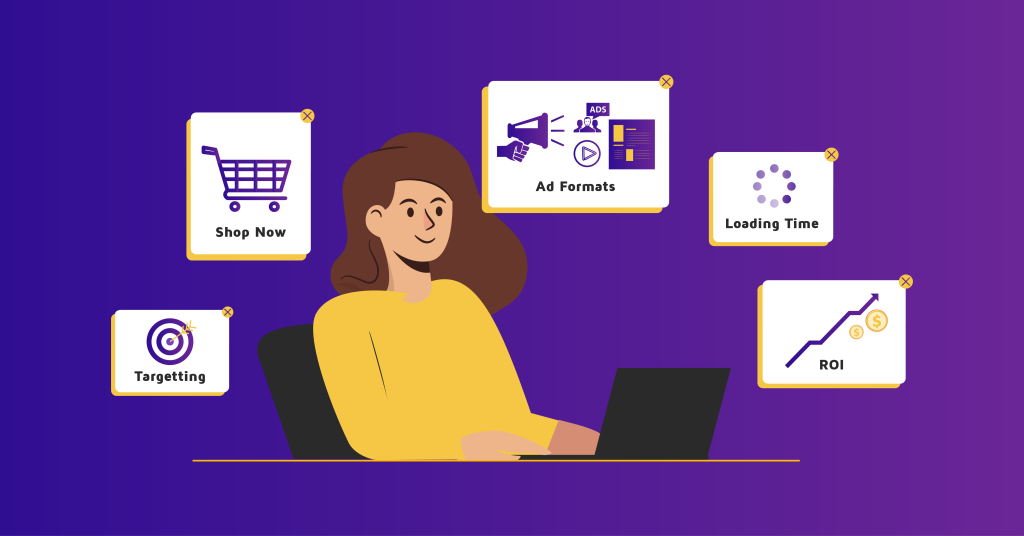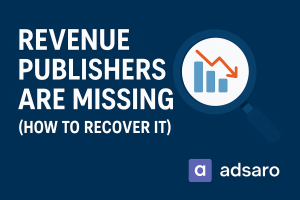In today’s fast-paced digital landscape, optimizing your ad campaigns for better ROI is essential for success. Whether using Google Ads or social media, the key is targeting the right audience, refining creatives, and continuously analyzing performance. Tools like Adsaro can help take your campaigns to the next level by automating tasks, optimizing bids, and providing deeper insights. By leveraging the right strategies and tools, you can maximize efficiency and drive better results from your ad spend. Let’s explore how to optimize your ad campaigns for better ROI and achieve smarter, more profitable campaigns.
1. Optimizing your ad campaigns for better ROI : Set Clear Goals

Define Success Metrics:
Establish specific, measurable, achievable, relevant, and time-bound (SMART) goals.
Identify key performance indicators (KPIs) such as click-through rate (CTR), conversion rate, cost per click (CPC), and return on ad spend (ROAS).
Align Goals with Business Objectives:
Ensure your campaign goals align with broader business objectives, whether it’s increasing sales, generating leads, or building brand awareness.
2. Understand Your Target Audience

Conduct Market Research:
Gather data on your target audience’s demographics, interests, and online behavior.
Use tools like Google Analytics, Facebook Insights, and customer surveys to gain insights.
Create Buyer Personas:
Develop detailed buyer personas to represent your ideal customers.
Tailor your ad messaging and targeting strategies to these personas.
3. Optimize Ad Creatives and Copy
Craft Compelling Ad Copy:
Use clear, concise, and persuasive language.
Highlight the unique selling points (USPs) and benefits of your product or service.
Include strong calls-to-action (CTAs) that prompt users to take the desired action.
Use High-Quality Visuals:
Incorporate eye-catching images, graphics, or videos that are relevant to your message.
Ensure visuals are high resolution and optimized for different devices.
A/B Testing:
Test different versions of your ads to see which performs best.
Experiment with variations in headlines, ad copy, images, and CTAs.
4. Optimizing your ad campaigns for better ROI : Leverage Targeting Options

Audience Segmentation:
Segment your audience based on demographics, interests, behavior, and past interactions.
Create tailored ad campaigns for each segment to increase relevance and engagement.
Retargeting:
Use retargeting strategies to reach users who have previously interacted with your brand.
Display ads to users who visited your website, engaged with your content, or abandoned a shopping cart.
Lookalike Audiences:
Use lookalike audience features on platforms like Facebook and Google to reach new users similar to your existing customers.
5. Optimize Bidding Strategies
Automated Bidding:
Utilize automated bidding strategies provided by ad platforms to optimize bids in real-time.
Options include target CPA (cost per acquisition), target ROAS (return on ad spend), and maximize conversions.
Manual Bidding:
For more control, use manual bidding to set maximum bid amounts for your ads.
Adjust bids based on performance data and campaign goals.
Bid Adjustments:
Implement bid adjustments for specific demographics, locations, devices, and times of day to maximize ROI.
6. Optimizing your ad campaigns for better ROI : Enhance Landing Pages

Relevance and Consistency:
Ensure your landing pages are relevant to the ad content and provide a seamless user experience.
Maintain consistency in messaging, visuals, and offers between your ads and landing pages.
Optimize for Conversions:
Use clear and compelling headlines, concise copy, and prominent CTAs.
Simplify forms and reduce friction in the conversion process.
A/B Testing Landing Pages:
Test different landing page elements such as headlines, CTAs, layout, and design to improve conversion rates.
7. Monitor and Analyze Performance
Use Analytics Tools:
Utilize tools like Google Analytics, Facebook Ads Manager, and platform-specific dashboards to track performance metrics.
Monitor KPIs such as CTR, conversion rate, CPA, ROAS, and overall ROI.
Regular Reporting:
Create regular performance reports to identify trends and insights.
Use data to inform strategic decisions and optimize campaigns.
8. Optimizing your ad campaigns for better ROI : Continuous Optimization

Refine Targeting:
Regularly review and refine your audience targeting based on performance data.
Exclude underperforming segments and focus on high-converting audiences.
Adjust Budgets:
Allocate more budget to high-performing campaigns and reduce spend on low-performing ones.
Ensure your budget distribution aligns with your campaign goals and ROI targets.
Update Ad Creatives:
Refresh ad creatives regularly to avoid ad fatigue and keep your audience engaged.
Incorporate new trends, seasonal themes, and relevant offers.
Optimize Ad Frequency:
Monitor ad frequency to avoid overexposure and ad fatigue.
Adjust frequency caps to balance visibility and user experience.
Conclusion
Optimizing your ad campaigns for better ROI requires a comprehensive approach that includes setting clear goals, understanding your target audience, crafting compelling ad creatives, leveraging advanced targeting options, optimizing bidding strategies, enhancing landing pages, and continuously monitoring and refining your campaigns. By implementing these best practices, you can maximize the effectiveness of your ad spend and achieve higher returns on your investment.








Leave a Reply